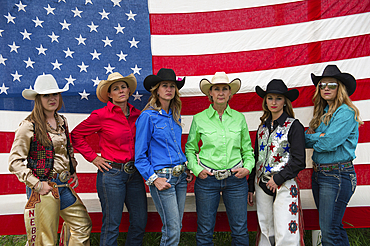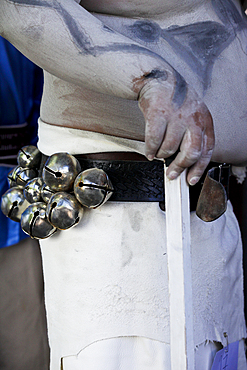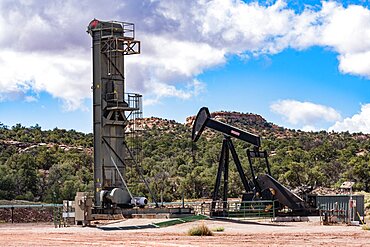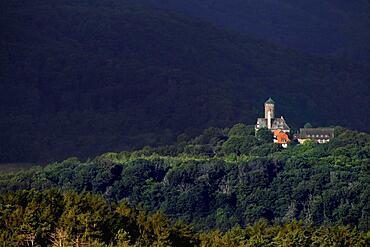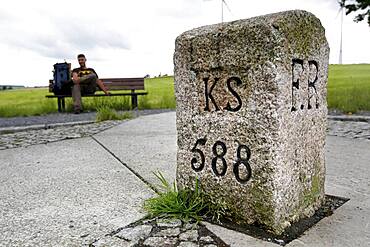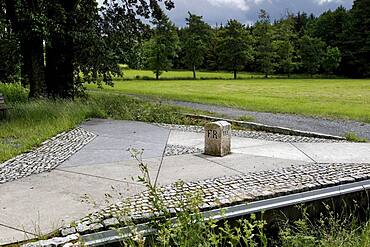Recent searches
Loading...
1116-52917 - Close up of a rodeo queen's belt and sequined vest in front of an American flag, Burwell, Nebraska, United States of America
1116-52915 - Rodeo queens pose for a portrait in front of an American flag, Burwell, Nebraska, United States of America
1116-52914 - Close up of a rodeo queen's belt buckle in front of an American flag, Burwell, Nebraska, United States of America
1116-52912 - Two rodeo queens stand with their horses, Burwell, Nebraska, United States of America
1116-52913 - Detail of a rodeo queen's belt, Burwell, Nebraska, United States of America
759-11049 - Venus Belt Comb Jellyfish, Cestum veneris, Socorro, Revillagigedo Islands, Mexico
759-11048 - Venus Belt Comb Jellyfish, Cestum veneris, Socorro, Revillagigedo Islands, Mexico
832-400760 - Truck, Storebaeltsbroen or Great Belt Bridge, Store Belt, Great Belt, Denmark, Europe
832-400217 - Famous colorful ribbons of good luck from Our Lord of Bonfim tied to the door of the church in Salvador, Bahia, Brasil
832-396191 - Several small plates with sushi, Shushi Restaurant Uobei Shibuya Dogenzaka with sushi conveyor belt, Running Sushi, Shibuya, Tokyo, Japan, Asia
746-90758 - Bull and female in tussock belt. South American sea lion (Otaria flavescens, formerly Otaria byronia), also called the Southern Sea Lion or Patagonian sea lion. South America, Falkland Islands
1320-188 - Fresh Roti being made on a conveyor belt at the Golden Temple, Amritsar, Punjab, India, Asia
1178-41716 - Black man doing weighted push-up in gymnasium
1178-40249 - Apache man and boy wearing traditional regalia
1178-40085 - Caucasian woman fastening belt near paddleboard
1350-4148 - A long stroke belt pump and a traditional pump jack on adjacent oil wells in the canyon country of Utah.
832-393912 - Silhouette of two men fishing with the Great Belt Bridge in the background, Denmark, Europe
1348-5326 - Bed in the Abbeville emergency department with restraint equipment, waist belt, ankle and wrist straps must allow both the safety of the patient but also of the nursing staff.
832-393313 - View from Bornhagen to Ludwigstein Castle in the Werra-Meissner district in Hesse, late medieval castle surrounded by forests of the Werra Mountains, Green Belt, border path, inner-German border, Bornhagen, Eichsfeld district, Thuringia, Germany, Europe
1178-34586 - Glowing metal manufactured pieces on conveyor belt
1178-34585 - Glowing metal manufactured pieces on conveyor belt
1178-33871 - Close up of midsection of person wearing traditional clothing
1178-32733 - Rear view of young person with studded belt sitting on stool at counter
832-392754 - Three Free States Stone, border stone, hiker with backpack sitting on bench, Green Belt, Kolonnenweg, border path, inner German border, hiking trail, Bavaria, Saxony, Thuringia, Germany, Europe
832-392753 - Three-Free-States-Stone, border stone, Green Belt, Kolonnenweg, border path, inner-German border installation, hiking trail, Bavaria, Saxony, Thuringia, Germany, Europe
1350-89 - The Horsehead Nebula, B33, below the Belt of Orion and the star Alnitak, along with the bright Flame Nebula, NGC 2024, to the left of Alnitak. Many other bright reflection nebulas populate the field, such as NGC 2023 just left of the Horsehead itself. The quintuple star system Sigma Orionis is right of the Horsehead. The dark Horsehead is set against the bright streak of the emission nebula IC 434.
1350-27 - The nebulas of Orion in the Belt and Sword of Orion area. Including M42, Orion Nebula 9below centre), Barnard's Loop (at left), M78 (small reflection nebula above centre), Horsehead Nebula (centre) and NGC 2024 (above Horsehead). There is faint reflection nebulosity at right -- the frame does not extend right far enough to show the Witchhead Nebula near Rigel.
1350-149 - Orion and Sirius rising over the Peloncillo Mountains of southwest New Mexico, on a clear night in December in the early evening. The Belt stars of Orion point down to Sirius, the Dog Star.
1350-79 - The Belt and Sword region of Orion, with the Orion Nebula, Messiesr 42 and 43, at bottom. Below the left star of the Belt, Alnitak, is the famous Horsehead Nebula, while above it is NGC 2024, aka the Flame Nebula. At very top left is Messier 78, while part of Barnard's Loop arc across the field at left. The field is filled with other faint red emission and blue reflection nebulas. The large loose open cluster Collinder 70 surrounds the middle star of the Belt, Alnilam.
1350-352 - Baby chicks on a conveyor belt in Salisbury, Maryland, USA
1350-47 - This is the Belt of Orion with its three blue stars across the top of the frame (L to R: Alnitak, Alnilam, and Mintaka), with the iconic Horsehead Nebula (aka B33) below Alnitak, with the dark Horsehead set against the bright nebula IC 434, aka Orion's Dagger. The pinkish nebula above Alnitak is NGC 2024, the Flame Nebula. The small blue reflection nebula left of the Horsehead is NGC 2023, with smaller IC 435 to the left of it. The field is filled with the large open cluster Collinder 70. The multiple star at bottom left of centre is Sigma Orionis. Many other smaller bits of reflection nebulas populate the field in and around the Belt.
1350-40 - The Very Large Array (VLA) radio telescope in New Mexico, at sunset, March 17, 2013, with the Earth shadow rising at right and the pink Belt of Venus along the eastern horizon. This is a 2-section panorama, hand-held, with the 14mm lens and Canon 60Da camera.
1350-108 - A mosaic of the Sword and Belt region of Orion the Hunter, showing the diverse array of colourful nebulas in the area, including: curving Barnard's Loop, the Horsehead Nebula below the left star of the Belt, Alnitak, and the Orion Nebula itself as the bright region in the Sword.
1350-137 - A horizon-to-zenith panorama of the winter consellations on a March evening as they set into the southwest. Orion is at bottom centre, with his Belt pointing down to Canis Major and up to Taurus. Gemini and Auriga are at top, in this case near the zenith overhead. The bright star clusters, M44, the Beehive, (at left) and M45, the Pleiades, (at right) flank the Milky Way. M45 is embedded in the Zodiacal Light. The star clusters M35 in Gemini and M41 in Canis Major are also visible as diffuse spots, as are several other star clusters. A couple of satellite trails are visible.
1350-11 - The Belt of Orion with the Horsehead Nebula at botton, the dark nebula set in the bright emission nebula IC 434. The nebula at left of the Zeta Orionis (aka Alnitak) is the Flame Nebula, NGC 2024. The reflection nebula at upper left is the M78 complex with NGC 2071. The other Belt stars are Alnilan (centre) and Mintaka (upper right). The field contains a wealth of other blue reflection and red emission nebulas.
1178-31132 - Mid adult woman checking safety belt on baby daughters car seat
1178-31118 - Mid adult man fastening safety belt on baby daughters car seat
1113-103634 - life buoy, life belt, ferry, indonesia
832-389617 - Fishing boat at the reed belt of the Irrsee, from above, drone photo, aerial view, Zell am moss, Mondseeland, Salzkammergut, Upper Austria, Austria, Europe
832-389580 - Wafts of fog at Irrsee with fishing boats in the reed belt, ground fog, from above, drone photo, aerial view, Zell am moss, Salzkammergut, Upper Austria, Austria, Europe
832-389619 - Fishing boat at the reed belt of the Irrsee, from above, drone photo, aerial view, Zell am moss, Mondseeland, Salzkammergut, Upper Austria, Austria, Europe
832-389572 - Boats in the reed belt at Mondsee, drone photo, aerial photo, Mondseeland, Salzkammergut, Upper Austria, Austria, Europe
832-389578 - Wafts of fog at Irrsee with fishing boats in the reed belt, ground fog, from above, drone photo, aerial view, Zell am moss, Salzkammergut, Upper Austria, Austria, Europe
832-389574 - Bathing jetty with reed belt at Mondsee, drone photo, aerial view, Mondseeland, Salzkammergut, Upper Austria, Austria, Europe
832-389579 - Wafts of fog at Irrsee with fishing boats in the reed belt, ground fog, from above, drone photo, aerial view, Zell am moss, Salzkammergut, Upper Austria, Austria, Europe
1179-4842 - Blurred motion of apples flowing on conveyor belt after the washing process, Valtellina, Sondrio province, Lombardy, Italy, Europe
1116-49777 - Service dog helping a woman with visual impairment at a curb
832-388134 - Sand dunes of the Namib Desert, dune belt, long beach, Walvis Bay, Namibia, Africa
832-388439 - Fishing boat at the reed belt in morning fog, Irrsee, Salzkammergut, Upper Austria, Austria, Europe
1174-8862 - Side view of shirtless man leaning against a van, drying himself with pink towel, Cornwall, United Kingdom
832-387076 - Shore area with reed belt at Lake Barmsee, near Kruen, Werdenfelser Land, drone shot, Upper Bavaria, Bavaria, Germany, Europe
832-385084 - Flowering Cattail (Typha) in reed belt, Lake Geiseltalsee, Saxony-Anhalt, Germany, Europe
794-1535 - Lesbian Gay Bisexual Transgender Pride Parade, San Francisco, California, United States of America, North America
1178-28590 - Boy having his seat belt buckled by his mother
1178-28591 - Boy smiling as his father buckles his seat belt
1174-7411 - Traditional Chinese theatre performance in temple, Beijing, China, China
1116-42765 - Agriculture - Portrait of a young cowgirl leaning against an old barn / Childress, Texas, USA.
1174-4830 - Male Japanese Kendo fighter tying belt of his blue Kendo uniform, Kyushu, Japan
832-382348 - Pier in the harbour with life belt, dusk, lake Geiseltalsee, Braunsbedra, Saxony-Anhalt, Germany, Europe
1174-4683 - Scuba diver blowing bubble rings. As the escaping air rises to surface, the decrease in pressure causes the rings of air to expand.
857-94454 - A snowy owl after sunset with the Belt of Venus in the background.
1172-2802 - Woman Standing on Wooden Bridge Holding Parasol
1172-2796 - Woman in Kimono Standing Under Cherry Blossom Tree
1172-2800 - Woman Dressed in Kimono Standing Holding Parasol
1172-2797 - Woman Dressed in Kimono Standing Holding Parasol
842-489 - A view of Bakers Belt near New Holkham, Norfolk, England, United Kingdom, Europe
857-92538 - The province of Mendoza is part of all Argentine provinces that are vertically crossed by the Cordillera de Los Andes. The Principal Cordillera is the result of an early folding, with an average height of about 6500 meters. It has two distinct sectors: in the north and to the provincial Diamond Rio is characterized by a high narrow strip, which finds its highest expression in the Cerro Aconcagua 6962 m. In the southern provinces, from Diamond Rio to the South forms a wider and less high orographic belt.
857-92539 - The province of Mendoza is part of all Argentine provinces that are vertically crossed by the Cordillera de Los Andes. The Principal Cordillera is the result of an early folding, with an average height of about 6500 meters. It has two distinct sectors: in the north and to the provincial Diamond Rio is characterized by a high narrow strip, which finds its highest expression in the Cerro Aconcagua 6962 m. In the southern provinces, from Diamond Rio to the South forms a wider and less high orographic belt.
857-89639 - Quickdraws racked on a climbers harness in Kootenai Creek, Montana.
1178-17668 - The seat belt warning on the dashboard of a car
1178-11573 - USA, Colorado, Young woman carrying buckets with sunflowers
832-369844 - Terminal 1, Concourse BC, connecting tunnel, O'Hare International Airport, Chicago, Illinois, USA, America
857-85958 - A mountain goat on watch in the Big Belt Mountains, Canyon Ferry, Montana, United States of America
832-317775 - USA, United States of America, Arizona: Roadsign to buckle up while driving.
832-315314 - Bungee jumping from the pier, Scheveningen, The Hague, The Netherlands, Europe
832-357485 - Equipment of a goldmine, Dawson City, Yukon Territory, Canada
832-298892 - Moving walkway (moveator) at Munich International Airport, Munich, Bavaria, Germany
832-298891 - Moving walkway (moveator) at Munich International Airport, Munich, Bavaria, Germany

